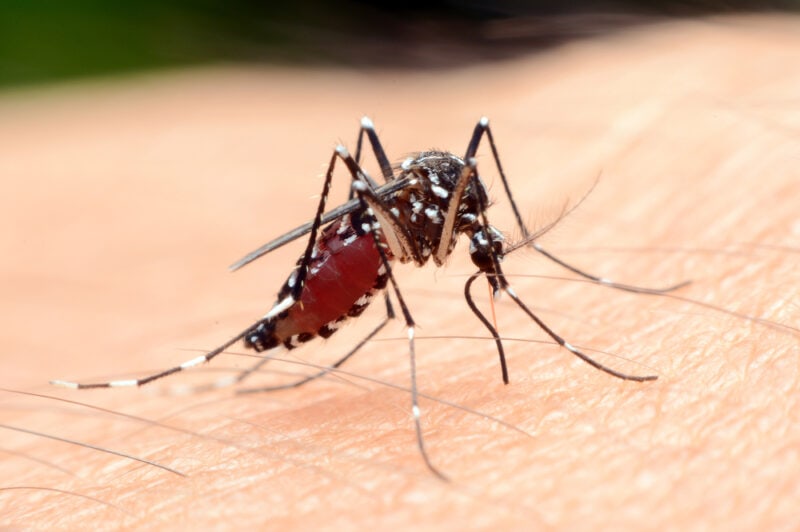8 Types of Mosquitoes in Michigan (With Pictures)
-
Hallie Roddy
- Last updated:

Would you believe us if we told you that mosquitoes were some of the deadliest animals on earth? We know it’s hard to believe, but each year mosquito-borne diseases are responsible for killing 725,000 people each year. Of those, malaria accounts for 600,000. What’s more shocking is that some scientists estimate that there are roughly 500–700 million cases of malaria worldwide every year.
Thankfully, if you live in Michigan, you likely don’t have to worry about contracting a mosquito-borne disease. However, just because you’re unlikely to get them here doesn’t mean that they aren’t present. And if you’re a Michigan native, you know just how bad these little pests can get.
So, what types of mosquitoes are there in Michigan? While there aren’t many, that doesn’t mean they don’t swarm us by the millions.
The 8 Types of Mosquitoes in Michigan
1. Aedes japonicus

Also called the East Asian bush or rock pool mosquito, these little pests are very common around the world, but also in Michigan. They are actually the third most invasive mosquito species in Europe, but their geographical expansion was actually facilitated by humans. It is now on the Invasive Species Specialist Group’s top 100 invasive species list. They are more likely to spread the West Nile virus.
2. Psorophora ciliata

This is one of the largest mosquito species in the world. They are found in the southeastern part of the US, and they mainly stick to the southern half of the state. They are highly attracted to artificial light, so if you don’t want them hanging around, it’s best to sit in the dark! These mosquitoes are often testing positive for the eastern equine encephalitis virus.
3. Aedes vexans

This mosquito species is considered an inland floodwater mosquito. They are mostly present in southern California, although they have also been found living in Michigan. They usually develop in floodplains, grassy fields, and other areas that get temporarily flooded. They often carry the West Nile virus and dog heartworm.
4. Anopheles punctipennis

You might be able to recognize this mosquito by the black and white spots on its wings and long, dark legs. They have their greatest numbers from July through September and are often found in swamps, ditches, and marshes. They are also more likely to carry malaria than other species in Michigan.
5. Aedes canadensis

These mosquitoes are known for their pointed abdomens and white bands on their hind legs. They often develop in woodland pools and show up rather abruptly in the spring and summer. They are known to carry West Nile virus, California encephalitis, and eastern equine encephalitis.
6. Culex pipiens

Different from other mosquitoes, this species is pale brown or golden in color. They survive by overwintering and laying eggs in containers or other man-made habitats. Watch out for them from June to September when their numbers are greatest. They carry West Nile virus, avian malaria, filarial worms, and Saint Louis encephalitis virus.
7. Aedes triseriatus

You know those mosquitoes that hang around during the day while the others seem to be elsewhere? This would be them! This species has distinct black and white scales on its abdomen with silver scales running laterally. They show up earlier than other species, around May, and are found in wooded areas. They are likely to carry Dengue fever, West Nile virus, and Yellow Fever virus.
8. Coquillettidia perturbans

You can identify these mosquitoes by their white, banded mid-section, pale scales, and black and white wings. These pests overwinter while they are still larvae in cattail marshes and make their biggest appearance from July to August. They are most popularly known for carrying the West Nile virus and eastern equine encephalomyelitis virus.
In Conclusion
While we all wish mosquitoes could be a thing of the past, these insects serve a purpose, even if they do carry deadly diseases to us and our pets. With that said, it’s unlikely you have to worry about them here. Regardless, make sure you wear appropriate clothing with long sleeves and pants and use DEET spray to keep them at bay during the warmer months. Thankfully, they disappear during Michigan’s harsh winters, but they’ll make their appearance again before you know it!
Featured Image Credit: Mario Saccomano, Shutterstock
Contents
